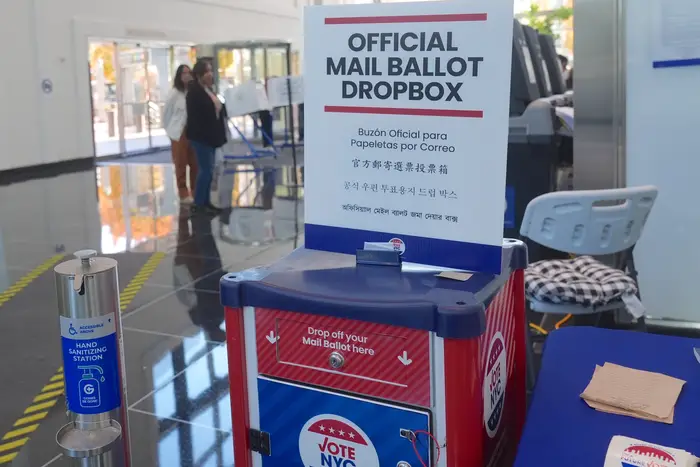Top Stories
NYC Voters Reject Measure to Align Local Elections with Presidential Years

UPDATE: In a surprising turn of events, New York City voters have decisively rejected a ballot measure aimed at moving local elections to coincide with presidential election years. With nearly all votes tallied on November 7, 2023, the Board of Elections reported that 53% of voters opposed the measure, while 47% were in favor.
This ballot initiative, backed by key figures including Grace Rauh, executive director of the good-government group Citizens Union, was designed to tackle chronic low voter turnout during municipal elections. Rauh expressed her disappointment, stating, “We are encouraged by the unusually high levels of participation in this year’s municipal election.” Preliminary results show that over 2 million New Yorkers cast their ballots this November, marking the highest participation in a mayoral race since 1969.
Despite the proponents’ hopes that aligning local elections with presidential years would increase engagement, the argument fell flat against this year’s turnout of approximately 40% in the city’s municipal elections, a stark contrast to just 23% turnout in the previous mayoral election in 2021 and 62% during the presidential election in 2020.
Opponents of the measure, including prominent journalist Errol Louis, cautioned that combining the high-profile race for mayor with the presidential election could undermine the focus on critical local issues. “If New York is going to be hell-bent on increasing participation, we should be at least a little bit concerned about making sure it’s informed participation,” Louis wrote in a column for NY Magazine.
The proposal had garnered support from influential leaders, including Gov. Kathy Hochul. However, newly elected mayor Zohran Mamdani expressed his opposition to the measure, though he did not elaborate on his reasoning.
For this change to take effect, state lawmakers would need to pass a constitutional amendment, which requires approval in two consecutive legislative sessions before it can be put before voters as a state ballot measure.
As the dust settles on this contentious issue, the focus now shifts to what steps local officials will take to further enhance voter engagement in upcoming elections. The high turnout in this election cycle may provide valuable insights into how to maintain and build upon this momentum moving forward.
Stay tuned for updates on voter engagement initiatives and future proposals that may reshape the electoral landscape in New York City.
-

 Science3 weeks ago
Science3 weeks agoInterstellar Object 3I/ATLAS Emits Unique Metal Alloy, Says Scientist
-

 Politics3 weeks ago
Politics3 weeks agoAfghan Refugee Detained by ICE After Asylum Hearing in New York
-

 Business3 weeks ago
Business3 weeks agoIconic Sand Dollar Social Club Listed for $3 Million in Folly Beach
-

 Health3 weeks ago
Health3 weeks agoPeptilogics Secures $78 Million to Combat Prosthetic Joint Infections
-

 Science3 weeks ago
Science3 weeks agoResearchers Achieve Fastest Genome Sequencing in Under Four Hours
-

 Lifestyle3 weeks ago
Lifestyle3 weeks agoJump for Good: San Clemente Pier Fundraiser Allows Legal Leaps
-

 Science3 weeks ago
Science3 weeks agoMars Observed: Detailed Imaging Reveals Dust Avalanche Dynamics
-

 Health3 weeks ago
Health3 weeks agoResearcher Uncovers Zika Virus Pathway to Placenta Using Nanotubes
-

 World3 weeks ago
World3 weeks agoUS Passport Ranks Drop Out of Top 10 for First Time Ever
-

 Entertainment3 weeks ago
Entertainment3 weeks agoJennifer Lopez Addresses A-Rod Split in Candid Interview
-

 Business3 weeks ago
Business3 weeks agoSan Jose High-Rise Faces Foreclosure Over $182.5 Million Loan
-

 Top Stories3 weeks ago
Top Stories3 weeks agoChicago Symphony Orchestra Dazzles with Berlioz Under Mäkelä








